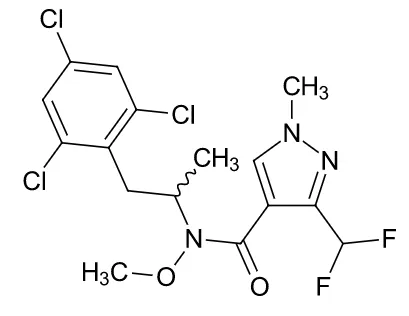
Sep . 30, 2024 13:08 Back to list
Effective Weed Control Solutions with Gallant Herbicide for Optimal Crop Health
Understanding Gallant Herbicide A Comprehensive Overview
Gallant herbicide, a widely recognized product in modern agriculture, plays a crucial role in the control of grassy weeds in various crops. Utilizing advanced formulations and active ingredients, Gallant is favored by many agricultural professionals due to its effectiveness and specificity in targeting unwanted plant species without damaging the desired crops.
Composition and Mechanism of Action
Gallant commonly contains the active ingredient haloxyfop. This herbicide is classified as a selective post-emergent herbicide, primarily effective against annual and perennial grasses. The mechanism of action involves the inhibition of fatty acid synthesis, which disrupts the growth processes of target grasses. When applied, Gallant is absorbed through the leaves and translocated to the growing points of the weeds, leading to their eventual death.
One of the significant advantages of Gallant is its selective nature, meaning it targets only specific weed species while being safe for many broadleaf crops, such as canola, soybeans, and various vegetables. This selectivity is critical for maintaining the health of desired plants while simultaneously suppressing competition from grasses that can hinder crop yield and quality.
Application Guidelines
For optimal effectiveness, Gallant should be applied during the correct growth stages of both the crops and the weeds. Timing is essential; applying the herbicide when weeds are young and actively growing increases the likelihood of complete eradication. Typically, applications are made when the target grasses are within the 2- to 4-leaf stage.
The recommended dosage varies depending on the specific crop and the density of the weed infestation. Farmers must adhere to local agricultural guidelines and regulations regarding herbicide use to avoid potential environmental and health hazards. Proper calibration of application equipment is also essential to ensure uniform coverage and minimize drift to non-target plants.
Resistance Management
gallant herbicide

As with many herbicides, the excessive or incorrect use of Gallant can lead to the development of herbicide-resistant weed populations. To counteract this, farmers are encouraged to implement integrated weed management strategies. This may include rotating herbicide types, using mechanical weed control methods, and incorporating cultural practices like crop rotation and cover cropping.
Research continues to emphasize the need for resistance management plans. Integrating Gallant with other management practices not only prolongs its effectiveness but also contributes to sustainable farming practices, ultimately supporting ecosystem health.
Environmental Impact
The use of Gallant, like any herbicide, raises concerns regarding its potential environmental impact. Studies indicate that when used according to label instructions and best management practices, Gallant poses a low risk to non-target organisms, including beneficial insects and soil microbes. Additionally, Gallant has a low potential for groundwater contamination due to its rapid degradation in soil under aerobic conditions.
Nonetheless, it is crucial for users to remain vigilant about potential runoff into nearby water bodies. Buffer zones and careful application can help mitigate any risks to aquatic ecosystems, ensuring that the herbicide's benefits in weed management do not come at the cost of environmental integrity.
Conclusion
Gallant herbicide stands out as a valuable tool in modern agricultural practices, enabling farmers to effectively manage grassy weeds that can compromise crop yields. Its selective action, when combined with proper application techniques and integrated weed management strategies, positions Gallant as a reliable option in a farmer's herbicide arsenal.
As the agricultural sector continues to evolve, ongoing research and innovation in herbicide formulations, including Gallant, are essential to meet the challenges posed by weeds while supporting sustainable farming practices. Proper education and adherence to application guidelines will ensure that Gallant can contribute to successful crop production with minimal environmental impact. As farmers strive for higher efficiency and productivity, understanding and effectively utilizing Gallant herbicide is paramount in promoting a fruitful and sustainable agricultural landscape.
-
Powerful Fungicide for Optimal Crop Health & Yield Protection
NewsAug.23,2025
-
Azoxystrobin Fungicide: Advanced Crop Protection Solutions
NewsAug.22,2025
-
Willowood Imidacloprid: Best Broad-Spectrum Insecticide Solution
NewsAug.22,2025
-
Atrazine Herbicide: Selective & Effective Weed Control for Sale
NewsAug.21,2025
-
Azoxystrobin: Broad-Spectrum Fungicide Solutions
NewsAug.11,2025
-
Best EPA Boscalid: Superior Crop Fungicide for Max Yields
NewsAug.11,2025
